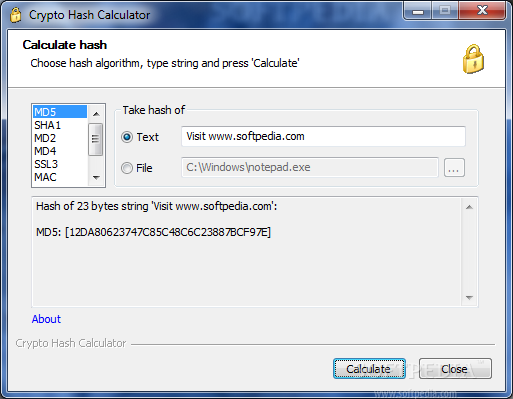
It was another year until the first practical collision attack on SHA1 was performed by a team from Google Research and CWI Amsterdam. The first partial demonstration of an attack on SHA-1 happened in 2015 by Marc Stevens et al., but it didn't directly translate to a collision attacks. Digital certificate authorities (CAs) have been disallowed from issuing SHA-1-signed certificates since Jan. National Institute of Standards and Technology banned its use by U.S. However, it has been known since 2005 that it is vulnerable to theoretical attacks from very well-funded attackers and the U.S. RFC 3174 states SHA-1 is called secure because it is "computationally infeasible to find a message which corresponds to a given message digest, or to find two different messages which produce the same message digest.".
#BEST TOOL FOR HASH CALCULATOR GENERATOR#
You can confirm this by entering some test strings into our SHA1 generator above and observing how changing even one letter or other symbol, adding or deleting symbols, drastically changes the resulting checksum. With regards to the generated SHA1 the RFC states that any change to the message in transit will, with very high probability, result in a different message digest, and the signature will fail to verify.

This is what is referred to as a hash or checksum, and if you are familiar with the MD5 algorithm, the principle is the same.Īccording to the engineering taskforce the hash can then be used instead of the original message when digitally signing documents for improved efficiency due to the much smaller size of the hash compared to the original file.

When a message of any length less than 2^64 bits is input, for example in our SHA-1 generator, the algorithm produces a 160-bit message digest as output. SHA1 was first published in 1995 and in 2001 it was described in RFC 3174 "US Secure Hash Algorithm 1 (SHA1)" as an algorithm for computing a condensed representation of a message or a data file.


 0 kommentar(er)
0 kommentar(er)
